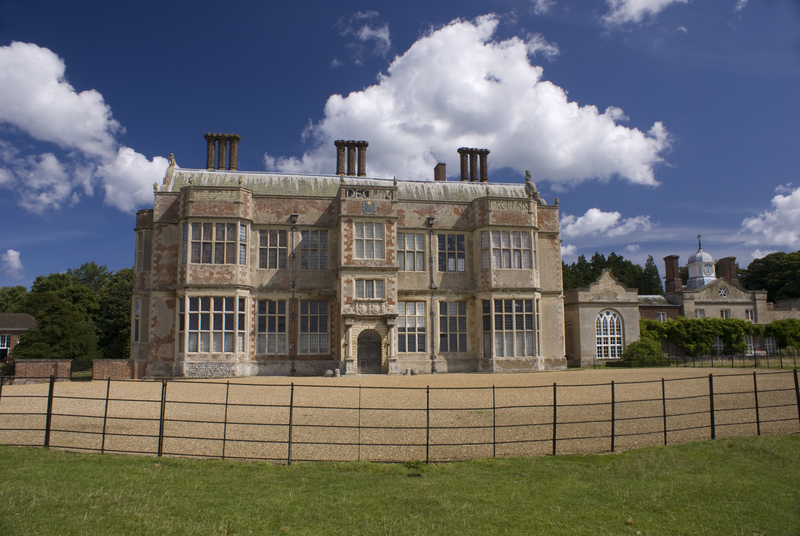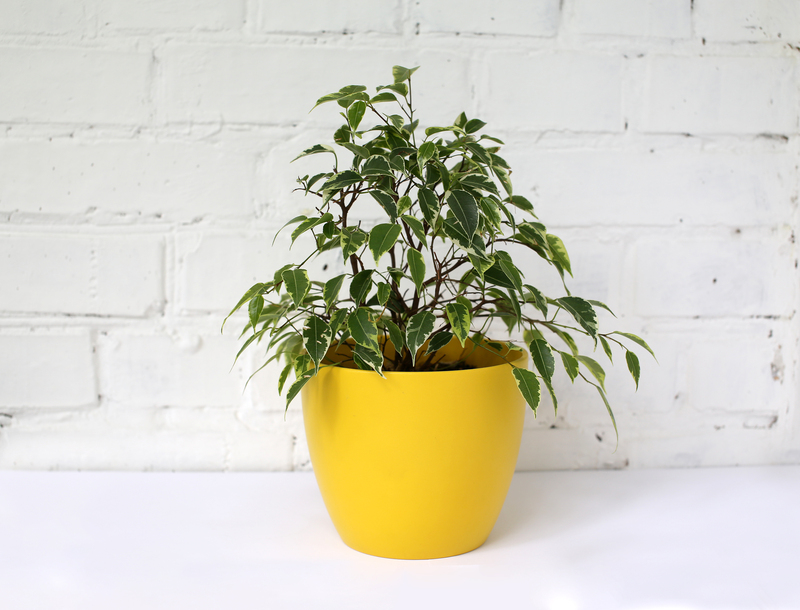Crafting a Garden That's Beautiful and Dog-Safe
Posted on 24/05/2025
Crafting a Garden That's Beautiful and Dog-Safe
If you're a dog parent who loves spending time outdoors, designing a dog-safe garden that's also visually stunning might seem like a big challenge. But with proper planning and some clever tricks, you can enjoy a lush, flourishing yard while keeping your canine companion happy and healthy. This comprehensive guide explains how to create a dog-friendly garden that's as safe as it is beautiful, using tips on pet-safe plants, smart landscaping, and durable design.
Why Prioritize Dog Safety in Your Garden?
Dogs are naturally curious creatures. They love to sniff, dig, chew, and chase. Many popular garden plants and landscaping materials, however, can be toxic or dangerous to our four-legged friends. Prioritizing a pet-friendly landscape protects your dog from potential hazards, gives you peace of mind, and lets the whole family relax and play outside together without worry.
The Dual Mission: Beauty and Safety
- Visual Appeal: Vibrant flowers, lush greenery, and attractive features can make your garden an inviting space for both you and your guests.
- Dog Protection: Carefully chosen plants, materials, and layout help ensure your dog isn't exposed to toxicity or physical injury.

Step 1: Understanding Dog Behavior in the Garden
To build a beautiful dog-friendly garden, start by observing how your dog interacts with the space. Each dog is unique, but there are some behaviors most canines share:
- Digging: Dogs may dig to bury treasures, cool off, or simply for fun.
- Chewing: Curious pups often chew on sticks, leaves, or flowers.
- Running: Dogs love to race around, sometimes creating "dog paths" along fences or favorite routes.
- Sunbathing: Many dogs enjoy basking in warm sunlit areas.
- Exploring: Snooping in every corner is part of the canine experience.
Tip: Take note of your dog's favorite hangouts, routines, and quirky habits. This information will help you tailor your sensational pet-safe garden design.
Step 2: Selecting Dog-Safe Plants
Many common garden plants are toxic to dogs, causing symptoms from mild stomach upset to severe poisoning. When choosing what to plant, prioritize non-toxic, pet-safe plants and avoid known dangers.
Safe Plant Choices
Here are some dog-safe plants that add style and structure to your garden:
- Sunflowers (Helianthus)
- Forsythia
- Camellia
- Snapdragon
- Marigolds (Tagetes)
- Basil, Rosemary, Sage (herbs)
- Spider Plant (Chlorophytum comosum)
- Ferns (Boston and Staghorn)
- Blue Daisy (Felicia amelloides)
- Polka Dot Plant (Hypoestes phyllostachya)
These plants are non-toxic to canines--and offer the color, texture, and vibrancy every stunning garden needs.
Plants to Avoid
- Azaleas and Rhododendrons
- Tulips and Daffodils (bulbs)
- Oleander
- Foxglove
- Lilies
- Autumn Crocus
- Sago Palm
- Hydrangea
Always double-check the toxicity of any plant with trusted resources like the ASPCA Toxic and Non-Toxic Plants List.
Step 3: Smart Garden Design for Play and Rest
Dog Paths and Pathways
Dogs often carve their own "paths" in the yard. Instead of fighting this, work with your dog's habits:
- Observe your dog's favorite route, then define it with mulch or flagstone for a *whimsical*, low-maintenance path.
- Consider edging with smooth stones or pet-safe hedges.
- Wide, curved paths blend into your overall garden design and look natural and inviting.
Designing Digging Zones
Some dogs can't resist digging. Rather than scold, create a "legal" digging area:
- Sandpits or Mulch Beds: Fill a corner with sand or soft mulch and encourage your dog to dig there. Hide toys or treats as incentives.
- Plant Hardy Groundcovers: Use tough, non-toxic groundcovers like creeping thyme or Irish moss in high-traffic areas to withstand occasional scratching or digging.
Space to Play and Relax
- Open Lawn Areas: Leave open, grassy spaces for fetch and zoomies. Choose dog-tough grasses like Bermuda or tall fescue for durability.
- Shade and Sun: Plant trees or install shade sails to provide cool retreats. Ensure sunny patches for sunbathing dogs.
- Resting Spots: Place benches, raised garden beds, or flat stones where your dog can lie down and observe the garden activity.
Step 4: Hardscaping & Mulching Considerations
Landscaping with dogs in mind means using materials that are both attractive and safe.
Hardscape Strategies
- Pathways: Use flat, non-slip flagstones, pea gravel, or decomposed granite to create beautiful, mud-free walkways.
- Fencing: A secure, sturdy fence keeps your dog safely in and unwanted critters out. Opt for solid or closely spaced picket designs, at least 4-6 feet high for most breeds.
- Water Features: If you install a pond or fountain, make sure it's shallow and accessible, or cover deeper water with mesh. Dogs may drink from or wade in your water features.
Mulch Done Right
- Avoid cocoa mulch: It contains theobromine, which is toxic to dogs (as is chocolate).
- Use cedar or pine mulch: These are generally safe and help control weeds.
- Steer clear of sharp gravel or large stones that may injure delicate paws.
- Rubber mulch can also be paw-friendly, but monitor for chewing behavior, as ingesting rubber is a hazard.
Step 5: Keeping Pests Away--Pet-Safely
No garden is immune to pests, but many commercial pesticides, herbicides, and slug baits are highly toxic to pets. To maintain a dog-safe yard:
- Use organic methods: Neem oil, diatomaceous earth, and insecticidal soaps are gentler alternatives.
- Choose biological controls: Introduce beneficial insects like ladybugs and lacewings to combat pests.
- Try physical barriers: Row covers, collars, or copper tape around beds can deter slugs and snails safely.
*Avoid any products that contain metaldehyde, such as many slug and snail baits, as this chemical is extremely poisonous to dogs.*
Fertilizer Safety Tips
- Keep dogs off freshly fertilized lawns & beds for at least 24-48 hours.
- Avoid fertilizers with blood meal, bone meal, or synthetic chemicals.
- Compost with care: Avoid putting fatty foods or pet waste in compost piles, and keep compost bins closed to prevent canine snacking.
Bonus Design Ideas: Enhancing Beauty and Function
There are plenty of creative touches that can make your dog-safe landscape even more enchanting for both human and canine members of the family.
Colorful Containers and Raised Beds
- Grow pet-safe flowers and herbs in raised beds or sturdy containers. They'll be less accessible to digging and trampling.
- Use bright ceramic pots or wooden planters to add color and organization.
Edible Gardens for Dogs
- Try growing edible plants your dog can nibble, such as carrots, green beans, blueberries, or strawberries.
- Set aside a small "treat patch" for canine-safe veggies and fruits, away from main flower beds.
Interactive Garden Features
- Install a shallow splash pool or bubbling pet fountain for hot summer days.
- Add a sandbox for digging, or agility features like tunnels and low hurdles.
- Include a lookout mound or boulder for dogs that love to supervise the yard.
Seasonal Chic: All-Year Beauty and Comfort
Plan for year-round interest in your dog-safe garden by mixing:
- Evergreen shrubs for winter structure
- Long-blooming annuals for summer color
- Fall foliage for autumn beauty
- Spring bulbs (pet-safe options like crocus or snowdrops)
Pause in each season to inspect for plant health, check fence integrity, and update mulch as needed.

Dog-Proofing the Garden: Foolproof Safety Checklist
Here's a quick dog-safe garden checklist to help keep your beloved pet protected:
- Remove or fence off toxic plants and bulbs.
- Store all chemicals, fertilizers, and tools out of reach.
- Block access to compost bins, garbage cans, and sharp objects.
- Check for gaps in fencing; repair any breaks promptly.
- Keep mulch fresh and free from mold, chocolate, or sharp debris.
- Clean water bowls and garden fountains regularly to prevent bacteria growth.
- Inspect for bee or wasp nests and address with pet-safe pest control if needed.
- Supervise new pups closely while they learn the garden boundaries.
One last, crucial reminder: If you suspect your dog has ingested something harmful, contact your veterinarian or an animal poison control helpline immediately!
Final Thoughts: Your Masterpiece of Beauty and Safety
Crafting a garden that's both beautiful and dog-safe is entirely possible with a blend of smart planning, plant knowledge, and a dash of creativity. The result is a harmonious space where every flower, path, and shade tree is as inviting to your dog as it is appealing to the human eye.
- Enjoy vibrant colors through pet-safe flowers and hardy groundcovers.
- Create lasting comfort with shady retreats, clear pathways, and engaging dog zones.
- Make safety a constant priority--upgrade as your dog ages or your family grows.
With these steps, your dog-friendly garden will be more than just a yard: it will become a thriving sanctuary that celebrates the joy of nature and the friendship of dogs.



